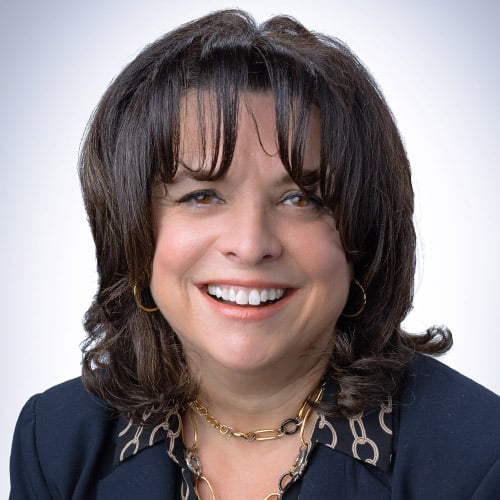What’s the plan? Figuring out how to help your declining loved one
This is the second article in a two-part series to share perspectives from my work with families—both now, as an estate planning advisor, and previously as an attorney. The first article focused on signs of decline and the need for powers of attorney for healthcare and finance. It also touched on necessary but difficult conversations. Here, we continue the focus on communication in the context of determining what care is needed. Then, we turn to additional resources families can access.
Determining level of care needed
Depending on the family dynamics, the necessary conversations often start with the immediate family, including both a spouse and adult children. Respect and sensitivity are critical to navigating conversations where denial, embarrassment and even paranoia may occur. Listen carefully to the person’s thoughts, fears, and wishes.
It may make sense for family members to participate in medical appointments with a primary care physician and, potentially, specialists such as neurologists. Keep in mind a number of issues can contribute to changes in memory and behavior, including medications, illness, etc., and those factors should be explored. Once the health status is determined, you will have more clarity on what kind of assistance may be needed.
In mild cases of physical or cognitive decline, often simple changes can dramatically improve the well-being of the loved one. These may include medications, ramps or handrails, in-home assistance with cooking and or cleaning, and technology that can provide reminders. Devices to provide alerts to falls and connect with emergency services can significantly improve the safety of the individual. (More on these below.)
In more advanced cases, assisted care may be appropriate. Depending on resources, this could happen at home or in a community-based residential facility. Assisted care facilities typically provide meals, personal care, and social activities. Services such as Assisted Living Locators® work with families to tour facilities and help evaluate service levels, pricing and long-term options for care. These typically free services are becoming more popular.
In the most advanced cases of physical and/or cognitive decline, a nursing and or memory care environment is required. These are situations where the decline is so significant that most personal care must be provided, including managing medication, appointments, etc.
Once you have determined the level of care needed, it is important to understand the financial circumstances of the individual. What is their medical coverage, do they have supplemental insurance, do they have such things as long term care insurance, savings or other assets that would be available for care needs? Knowing their financial picture allows you to better identify the care options available. Often the spouse or agent under a financial power of attorney will have access to this information. Sometimes gathering documents can require a bit of detective work. Attorneys, accountants and/or financial advisors can often help with this information either with permission of the individual or in honoring a financial power of attorney.
Resource organizations
There are numerous national, state, and local organizations available to meet the many needs of an aging population.
At the national level, the Alzheimer’s Association® offers information that helps in identifying Alzheimer’s and other dementia as well as help and support resources. The Family Caregiver Alliance® provides information, support and resources related to family caregiving. Its free online dashboard called CareNav enables input of personalized information then a match with caregiving needs. The National Council on Aging provides a service called the BenefitsCheckUp that identifies programs and services seniors are eligible for. The Administration on Aging, Benefits.gov and the Department of Veterans Affairs can be helpful relative to benefits available and resources for veterans and their spouses.
There are also numerous local organizations that can help, starting with your local Human Services Department as well as your local Aging and Disability Resource Center.
Technology
In our ever-changing technical world, a myriad of app solutions can be helpful in caring for an elderly loved one.
- Medisafe® is a leading personalized medication management platform that helps patients stay on top of their medication with information about the medicines, reminders and helpful information.
- Painscale allows you to track and manage the level of pain a loved one is experiencing.
- Clevermind, Luminosity and MindMate are all apps designed to help stimulate cognitive ability.
- There are also apps that help with daily life tasks like the Park & Forget application that helps you find your parked car. You press a button to save the car’s location then when returning to your car, hit the “Locate car” button and you get directed towards your car.
Technology will be a significant part of meeting the needs of this aging population. In the future, if you’ve “fallen and can’t get up,” it could be a necklace, watch, home security device or even a robot that alerts emergency services.
Japan has been experimenting with robotic home assistants for older adults for some time. IBM and Rice University are developing a robot that has sensors that can detect facial expressions, behavior and environment. It will be able to sense if someone has left the stove on, has fallen and needs assistance or is feeling unwell and in need of medical help. There are also efforts being made to create technology that can match caregivers with those in need of care, using complex algorithms to make sure the caregiver is a good match. Facets such as schedule, language, skills and personality are taken into account.
We are already using technology today in smart homes that provide security, smoke detection, can turn lights on and off, manage climate, open shades, order groceries, and lock doors. Smart watches can monitor heart rates, detect a fall, and serve as a telephone. We make progress every day with technology that make us more informed and potentially safer.
No substitutes for attentive planning
The United States Department of Health and Human Services says individuals over the age of 65 will make up nearly a quarter of the population by the year 2040. More of us will be in the role of caregiver and ultimately in the care receiving position as we live longer.
Technology and third-party resources can help a great deal. But nothing can substitute for careful planning, powers of attorney for healthcare and finance, a solid financial plan, and the affection and insight of a close family member or friend dedicated to clear communication. These let us advocate for and achieve the best and most appropriate care possible.
ABOUT THE AUTHOR

SVP Wealth Fiduciary Advisor | Johnson Financial Group
As Senior Vice President, Wealth Fiduciary Advisor, Kelly develops long-term relationships and provides comprehensive wealth solutions to her clients. She oversees and manages a knowledgeable team of wealth professionals in the Racine and Kenosha area.


